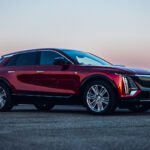Australia’s electric vehicle market saw a resurgence in May 2025, with Tesla leading the way in battery-electric vehicle (BEV) sales and BYD dominating the plug-in hybrid (PHEV) market. According to data from EV Volumes, BEV deliveries in Australia reached 9,784 units in May, marking an 8.6% year-on-year increase and the first month of growth this year.
Despite the overall growth in BEV sales, the total market for BEVs in Australia between January and May still saw a 19.3% decrease compared to the same period in 2024. On the other hand, PHEV sales experienced a fifth consecutive month of growth, with a 70.5% increase to 2,744 units in May.
In total, combined BEV and PHEV sales in Australia reached 12,528 units in May, the second-highest total of 2025. Tesla’s Model Y continued to dominate the BEV market in Australia, capturing a 36.6% market share in May. The Model Y recorded a significant year-on-year gain in deliveries, reaching 3,580 registrations, making up over half of its total sales for the year.
BYD, a Chinese brand, made a strong presence in the Australian market, with the BYD Sealion 7 leading the pack with 488 registrations in May. The BYD Seal and BYD Dolphin followed closely behind, showcasing the brand’s growing influence in the market.
While Tesla maintained its lead in the BEV market, the company saw a decline in sales compared to the previous year. The Tesla Model 3, in particular, experienced a significant drop in sales, down 70.7% year on year. This decline can be attributed to various factors, including competition from affordable Chinese EVs and challenges faced by Tesla, including CEO Elon Musk’s political activities.
BYD’s success in the Australian market can be partly attributed to its aggressive pricing strategy, which has allowed the brand to compete effectively with established players like Tesla. The BYD Shark and BYD Seal 6 dominated the PHEV market, accounting for almost 68% of PHEV sales in Australia between January and May.
Overall, the Australian electric vehicle market is witnessing a shift in dynamics, with traditional players like Tesla facing increased competition from Chinese brands like BYD. As the market continues to evolve, it will be interesting to see how these trends shape the future of electric mobility in Australia.







